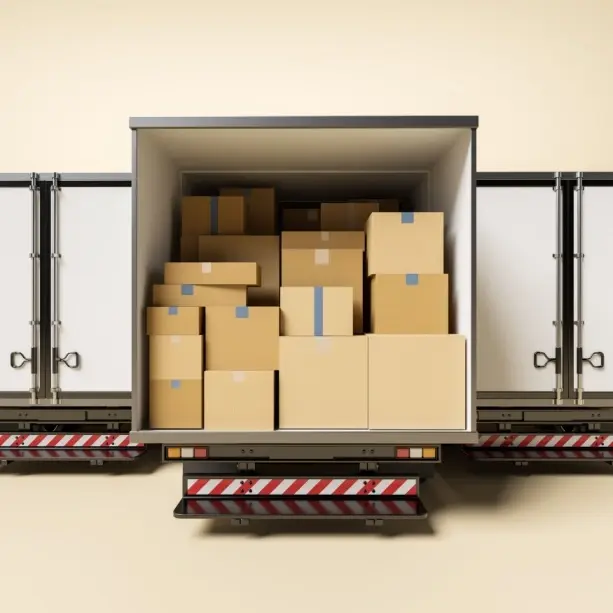AirTag trackers have revolutionized consumer tracking options by providing a light, easy-to-use tracking device for personal items. The popularity of these tags in consumer spaces and the personal sphere has led many fleet managers to wonder what kind of benefit these devices could provide to their logistics operations. In this blog, we will explore the appeal of Apple AirTags to logistics managers, how these tags work, the pitfalls of using consumer products in commercial spaces, and what a viable commercial alternative might look like to truly provide your logistics company with the visibility you need.
Increase Your ROI by Investing in AirFinder Everywhere
- Loss Prevention. Reduce the amount of loss that occurs during the supply chain process
- Location Coverage. AirFinder Everywhere uses a combination of GPS, Cellular, and WiFi to determine location everywhere
- Security Alerts. Know when a delay in shipment has occurred so the problem
can be addressed immediately.
Understanding AirTag Trackers
AirTag trackers are small, lightweight devices equipped with Bluetooth technology that allow users to track the location of assets in real time using their Apple devices. These trackers are small, designed to be easily attached to personal objects such as keys, wallets, laptops, and other easily misplaced items. While originally intended for consumer use in the home, logistics managers and other professionals have recognized that the convenience these devices provide in their personal lives would be useful to have in their professional lives, as well. Regardless of how they’re being used, however, AirTags operate in much the same way.
AirTag trackers utilize Bluetooth technology to communicate with nearby Apple devices with the requisite apps, such as iPhones, iPads, and Macs. If you misplace an item, you can use the app to look for the lost item’s location. As long as you are within 30 meters of the lost item, you should be able to locate it using this feature. However, while this range is more than apt for private homes and contained public spaces, it limits the tracker’s capabilities within larger, industrial sites and across wider ranges. Also, these trackers can only be utilized if you already have a compatible Apple device at your disposal.
Why Logistics Companies Use AirTag Trackers
As previously indicated, AirTags appeal to logistics managers as an asset tracking solution because they are already familiar with the devices from using them in their personal life. Even if they don’t use these trackers personally, there’s a strong chance that they know someone who does or have at least heard about the devices. This preexisting familiarity is a large part of the professional draw to Apple AirTags. After all, you can only implement solutions that you know about, and you aren’t always necessarily aware that there are other, better solutions out there that are actually built to your more specialized needs. In this context, it makes sense that many logistics companies would try to adapt a personal device to professional use. Here’s some of the ways they might use Apple AirTag devices within their logistics operations:
Improved Asset Visibility
One of the key reasons that logistics managers implement Apple AirTags within their logistics operations is that they want to improve their asset visibility. By attaching trackers to packages, containers, or vehicles, businesses attempt to monitor the movement of assets throughout the supply chain, reducing loss and streamlining operations. This is, after all, the primary function of an AirTag – to tell you the location of the item that the tracker is affixed to. By using these tracking devices, logistics managers hope to reduce search times for assets spanning from tools to cargo to equipment and beyond.
Optimizing Daily Processes
AirTag trackers are also commonly implemented with the goal of optimizing daily logistics processes. This optimization often encompasses route optimization, warehouse management, yard management, resource allocation, and more. By tracking the location of assets with Apple AirTags, businesses seek to identify inefficiencies and make adjustments to improve turnaround times and reduce costs. This is often completed through reducing search times and ensuring that assets are where they need to be at any given time. If an asset isn’t where it needs to be, then it might indicate that there’s some kind of holdup somewhere up the line.
Enhancing Security
AirTag trackers aim to enhance security in logistics operations, protecting businesses from losses and disruptions by deterring theft and enabling quick recovery of stolen assets. Even having a tracker on any given asset is often said to reduce the chances of assets being stolen in the first place; if it is not enough of a deterrent, logistics managers intend to use Apple AirTag trackers to locate and recover stolen items. While most of the other goals are somewhat feasible with some level of difficulty and limitations, the goal of using AirTags to recover stolen assets is largely unrealistic due to the product’s limited range. After all, stolen goods aren’t likely to be within 30 meters of anywhere a recovery team might think to go.
Are AirTag Trackers a Good Choice for Logistics?
Underlying the conversation about why and how logistics managers use Apple AirTags for supply chain visibility and beyond is the question of whether AirTag trackers are a good choice for this setting in the first place. After all, they weren’t actually designed to be used in professional settings. Apple AirTags were created with the intention of alleviating the stress that comes from misplacing personal items, making the recovery of technology and other valuables a lot easier. All you have to do is know where you’re been and attempt to pick up a signal in that area. It’s simple, it’s effective, and it helps improve the lives of consumers everywhere. But what works for the consumer doesn’t necessarily work in commercial spaces, simply because industrial needs are different and industrial scopes are usually far larger and more complex. These devices are incredibly useful, yes, but not in every context. They’re not designed to be. Some of the reasons that Apple AirTags are not a good choice to use within logistics operations and other industrial settings include:
Limited Location Visibility
The most glaring limitation of AirTag trackers within industrial settings lies within their technical capabilities. As previously stated, AirTags only have a range of 30 meters. This is perfectly fine for consumers, who will usually have some idea as to where they misplaced the item they’re looking for, such as in a house, store, or other relatively small and notable location. Logistics operations, on the other hand, encompass large yards, sites, and warehouses that contain countless assets that workers aren’t necessarily going to remember individually. Furthermore, AirTags cannot account for assets that are traveling between destinations, which is a problem, because this travel is at the core of logistics operations. When it comes down to it, the location visibility provided by AirTag trackers is incredibly limited and incapable of providing the benefits that logistics managers are looking for.
Privacy and Connectivity Concerns
Apple AirTags are also reliant on access to strong WiFi or data connections, as well as reliable Bluetooth connectivity. As we’ve already discussed, these trackers must be used in conjunction with an Apple device that they can connect to through the appropriate software. If that device does not have access to a strong enough WiFi or data connection, it will not be able to provide an accurate or consistent reading, or in many cases, any reading at all. Also, although the range of Apple AirTags can span up to 30 meters, if the Bluetooth range of the device being used to connect with them is more limited, then it will not be able to achieve even that limited 30 meter ideal. The fact that these tracking devices are reliant on these connectivities can also create privacy concerns depending on who has access to the requisite devices and systems.
Incomplete Process Insights
While Apple AirTags can be used to provide some degree of insights that can be used to improve overall processes, their ability to do so is limited at best and entirely misleading at worst. AirTags are not designed to provide complex, multifaceted insights – they record location data and location data only, sometimes with limited historical markers depending on your settings. With this in mind, it is incredibly difficult to actually observe trends of inefficiencies and disruptions within your process or to effectively identify areas for improvement. Knowing where your assets are, after all, is only a small part of the overall picture of what’s happening within your logistics operations. Other factors such as usage time, custody, and asset condition also have a large role to play, but Apple AirTags cannot provide this data, leaving you in the dark.
AirFinder Everywhere: The Commercial AirTag You Need
Luckily, not all hope is lost for gaining the visibility you need for your logistics operations. Plenty of asset tracking solutions that can be regarded as a “commercial AirTag” do exist; it’s just a matter of knowing they exist and knowing what to look for. In fact, so many of these solutions exist that you can make sure that you find one that meets your visibility needs while staying within your budget. In other words, you have options – AirTag isn’t the only tracking device out there, so you don’t have to settle for its limited capabilities.
Link Labs offers one such “commercial AirTag” for logistics operations through our AirFinder Everywhere asset tracking system. By combining multiple location technologies, we can provide location visibility both across multiple large facilities and on the road so you never lose sight of your assets. We don’t have the same problems with range as Apple AirTags, and our combination of location and communication technologies ensures a secure, reliable network no matter where you go. We also maintain historical records that you can use to identify more detailed business trends and make predictions about your company’s future. Condition monitoring sensors are also available for integration, allowing you to monitor a variety of factors including temperature, humidity, shock, tampering, movement, and acceleration. Our solution is highly customizable and highly scalable, so you can rest assured that you’re investing in a solution that meets your needs today and that can grow with you and add more functionality in the future. We also have a strong team backing our products, so if you ever have any questions or concerns, there’s always someone there to help.
If you’d like to learn more about how AirFinder Everywhere can bring complete visibility to your logistics operations, book a demo with our team of experts today!

Publisher: Source link










